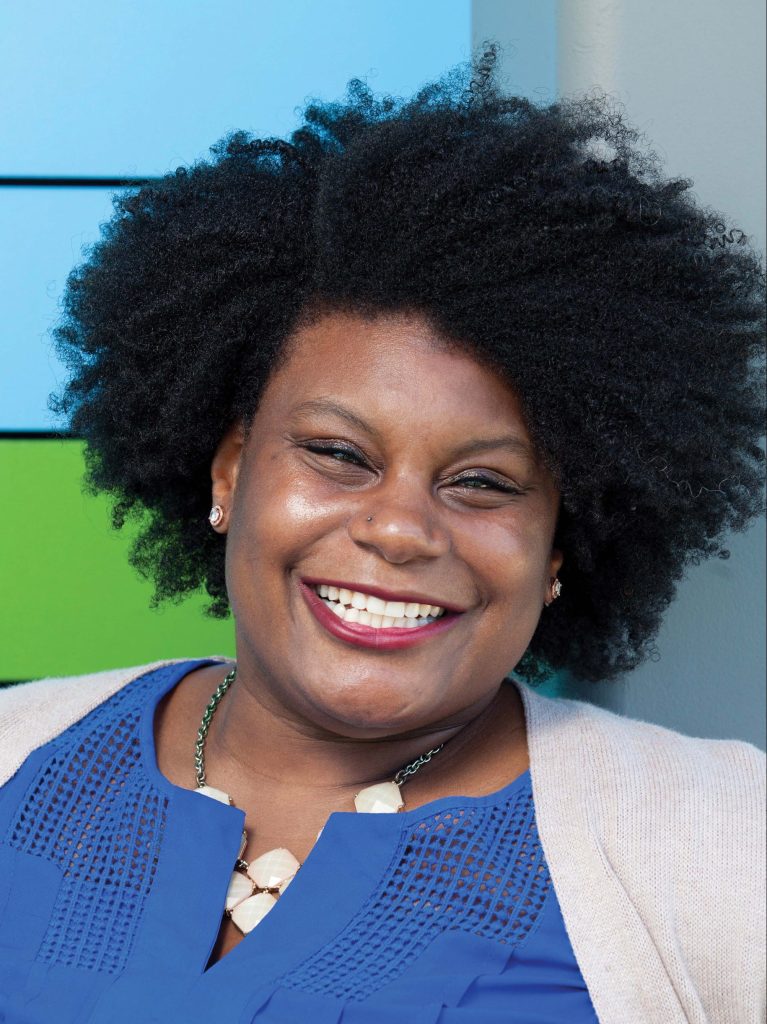
Confronting racism in the Catholic Church and recognizing our diversity should be joyful work, say Marcia Lane-McGee and Shannon Wimp Schmidt in their new book, Fat Luther, Slim Pickin’s (Ave Maria Press). Their book weaves together U.S. history and the stories of notable Black Catholics with reflections on pop culture, family life, and liturgy to help readers understand Black culture and the work that needs to be done to address the sin of racism.
Schmidt describes how her identity influences her faith, saying, “As soon as I step out into the world, I’m having an intercultural encounter. I think that contributes to how I understand who God is, who the saints are, and how I relate to Christ through the Blessed Mother. I read the gospels differently: It’s easier for me to see Jesus as a brown person in first-century Palestine because I am a Black person in America who understands oppression.”
Both the book and Lane-McGee and Schmidt’s first project, a podcast called Plaid Skirts & Basic Black, depict Catholic faith in the context of the Black experience.
Their work is an important reminder that white Catholics often tend to center their own experience and to assume that white Catholic culture is somehow a more “correct” way of being Catholic.
“If we are truly a universal church, then let’s show how universal we really are,” says Lane-McGee. “You don’t have to center yourself to do that.”
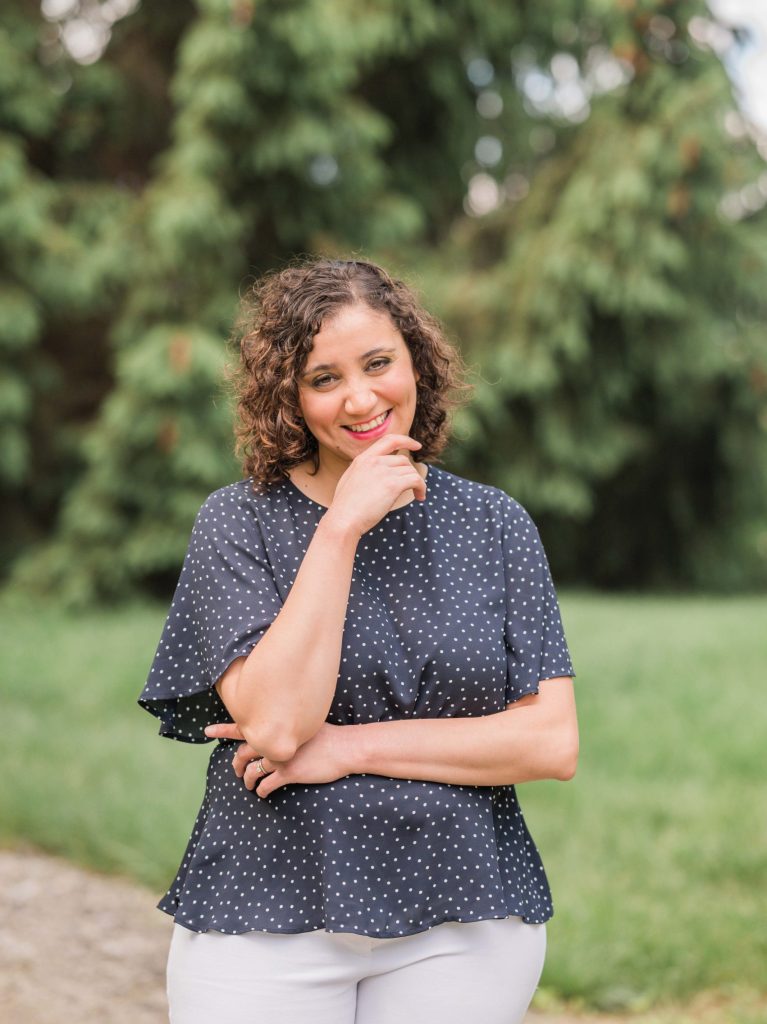
How did the two of you begin working together?
Shannon Wimp Schmidt: Marcia and I have known each other since about 2005, when we went on a mission trip together. We lost touch and reconnected when we were doing youth ministry at different parishes in the Archdiocese of Indianapolis. I roped her into being on the planning team for the National Catholic Youth Conference, because that’s what I do to people. After that, we were pretty much inseparable. We talk every day, and we text nonstop.
Around 2017 we decided, “Man, our conversations are amazing. We talk about feminism. We talk about racial injustice. We talk about the royal family. All of this is really important, and people need to hear us.” So in 2018 we decided to start our podcast, Plaid Skirts & Basic Black, because we felt like Black voices, particularly Black female voices, were missing from Catholic media.
One of the most powerful parts of your overall approach is how you tie together Black Catholic culture, liturgy, and history with your personal lives. Could you each give one example that epitomizes how your identities come together to help you understand your faith?
Marcia Lane-McGee: I previously ran a residential home for boys. At one point, everyone living in the house was Black, and the boys were just ecstatic about that. A lot of our lives are lived in the white gaze: always knowing that we are being seen by white people and that white people are trying to understand our behavior or judging it. And it’s really hard to be in that place 24/7. But during that four-month period when we were all Black, we got to have a lot of really great conversations.
A lot of our Catholic students are either Hispanic or African, and our African students have never had to confront Blackness. Being Black is a very American culture: It was born out of scraps, what we were left with after our other cultures were taken away. So I had the opportunity to speak to these African Catholic students as a Black Catholic. I was able to merge my faith and my culture to help them understand and start to navigate the world around them, a world in which they are now seen as Black.
One kid asked me, “How is God not being cruel to us?” And I didn’t really have a good answer for him. But my faith and my culture have helped me work through some things and help my students work through things as well.
Schmidt: I started my current job in 2017, two weeks before the Unite the Right rally in Charlottesville, Virginia. I work in a predominantly white, very affluent parish in the suburbs. So I was starting a new job, I’d just moved across the state with four little kids, including a newborn, and I was trying to sort out what was happening for myself. I wasn’t surprised by what happened, but the national response was depressing. Then my parish had this reaction of, “What’s this? We aren’t racist. What is happening in America?” A lot of people in my life didn’t really know what to say or how to say it.
I went to my pastor and said, “I would really like to do something. The church needs to respond to what happened and give people language to talk about it.” I hadn’t planned anything, people didn’t know who I was, I just wanted to do something. And kudos to him. He said, “Of course you can do this.” We had nearly 50 people show up to discuss how to talk about race.
Even though I knew people were looking for language, it was shocking to me how few people were having conversations about race, regardless of political affiliation. They were so removed from Black culture that this was a brand-new world for them. They didn’t necessarily understand why they were so upset. I, on the other hand, was having a full-on spiritual reckoning and conversations with God every day. Because as a Black person, when we see racial trauma on TV, even though it doesn’t affect us personally, it does affect us psychologically. I had gone through processing these events as a person of faith and was able to articulate my thoughts.
There are these things that affect me—not just negative things, positive things too—and automatically become part of my identity and relationship with God. Things that most people in the American church are totally oblivious to. And that’s one reason why we wanted to write this book: to help people enter into that and maybe start thinking about the church in a new and more universal way.
Both your podcast and your book address the intersections between pop culture and faith. How would you describe the intersections between pop culture and our religious and liturgical lives?
Lane-McGee: It’s one of those art imitates life things. You can’t do life without processing it through things that are supposed to imitate life. We all binge-watch TV shows—this is a huge part of our lives that helps us understand what we’re going through and relate to others. I think pop culture is really infused into a lot of our lives.
Everyone is a nerd for something. I love Doctor Who—so does Shannon—and watching this show about a Time Lord really helps me understand the human condition and how to relate to other people. We’re all stories in the end; stories are a part of all our lives. No matter what pop culture we consume, it helps us get through life.
Schmidt: I would add that it’s important to engage with pop culture because it’s part of our wider culture as Americans. Especially within the church, we have to be wary of creating a barricade or setting up a fortress in order to preserve Catholicism from some creepy, crazy world. We can engage with pop culture and evangelize our wider culture without creating this story that we’ve become tainted by it. Take, for example, the show Bridgerton. The show is very rated R, and some Catholics might not want to watch it. But there are themes in the show that have a lot to do with how we feel about love and marriage as Catholics.
We have to make individual choices about how to engage with culture while keeping ourselves fixed on Christ, without forgetting that what ultimately forms us is liturgical life, scripture, and church teaching. But we don’t have to be scared of culture or of the way religious tolerance and opposing worldviews play out in our world. The joy of human relationships comes from engaging with other people and multiple viewpoints to ultimately find the truth that is found in Christ.
This ties into the title of your book, Fat Luther, Slim Pickin’s. How did the two of you come up with that title?
Schmidt: For people who don’t know, Luther Vandross was a great R&B singer. In the 1980s, he was a little bit heavier—
Lane-McGee: No, no—He was a lot of a bit heavier. He was a large man.
Schmidt: Thank you. He was a lot of a bit heavier. So he was “Fat Luther.” In the ’90s he crossed over into the pop scene and lost a lot of weight. So there’s this joke in Black culture that Fat Luther is the better Luther because that’s when he made all of his hits. It’s this important pop culture debate that happens every Christmas.
We chose to put that in the title because we wanted to emphasize that people are good no matter their body size, skin color, etc. We are good as we are, and we come as we are to the church. No one should feel like they have to change to come to church.
The slim pickin’s part comes from the idea that as Black Catholics, especially as Black Catholic women, we are often left with what’s at the bottom of the barrel. We have to make do with what we get.
The genius of Black culture is that we have made sustenance out of scraps. From the beginning when people were brought over in enslavement until now, we’ve turned slim pickin’s into abundance. That’s what we bring to the church: We take whatever we have and turn it into abundant life.
Lane-McGee: Not to discount men, but Black culture is a matriarchy. It’s based on cultures passed down from women. And so when we say that we were making sustenance out of scraps—that was Black women. It’s important we don’t forget that.
You write about Black women as the “neck of the church.” What do you mean by this?
Lane-McGee: That metaphor comes from My Big Fat Greek Wedding. We were talking with one of our friends about how women are really the ones running the church, and we jokingly quoted the movie, saying, “The man is the head, but the woman is the neck. And she can turn the head any way she wants.” And we really are: Things wouldn’t move, things wouldn’t happen in parishes if it weren’t for the women behind the scenes.
If a priest wants to understand what’s going on in the parish, he doesn’t usually ask the men. He goes to the church secretary, who is usually a woman. It’s the church secretaries, the old ladies putting together the funeral lunches, the young female youth ministers—it’s all of us who keep the church running.
Schmidt: What we’re trying to get at with that metaphor is what’s behind so much of parish renewal right now. The priest is there to lead, to be the sacramental minister, and to direct the energy of the people of God. But priests cannot know everything, cannot be skilled at everything. They don’t know what it’s like, for example, to raise a family. These are the things that we as laypeople can bring to the attention of our pastors. We can help them address the needs of our communities, because we’re in our communities seeing what’s happening. We are the church. To say we’re the neck is to say that we are directing the energies of the church in the right places.
What were you trying to accomplish with this book?
Schmidt: We were trying to acknowledge the truth of why Black culture exists in America but also to acknowledge the joy. The book is a celebration: It’s not just about the struggle and the horrible things that have happened throughout history. Even though we’ve had to transform the things that have wounded us, this is a joyful thing. Hopefully this comes across in the book and people find a way to enter into our culture through joy and celebration.
Lane-McGee: We’re not necessarily making Black culture accessible, but we’re making conversations surrounding our conversation accessible. We’re not trying to build bridges—it isn’t our bridge to build—but we are offering tools so you can start building those bridges yourself.
How can white Catholics be better allies?
Lane-McGee: The whole world woke up at the same time on May 25, 2020 with the murder of George Floyd. And some people decided to press snooze and others threw away the alarm clock. All of that is to say that it’s an important question to ask, but it’s also a question that was asked and answered two years ago. If you’re still asking that question in 2022, you want to be acknowledged for asking the question.
If this is the first time you are thinking about racial justice, that’s amazing. I think the best time to have done something was right after you heard about it; the second-best time is now. People should still be asking that question if they need to ask that question, but don’t ask me, a Black woman who’s been living in this reality for years now. You need to “go do a Google,” as my mom says, and ask yourself those questions and then start doing the work that Google tells you to do.
Schmidt: We know what racism is in America. I’m a light-skinned person who walks around with white privilege: I know that my life is not the same as Marcia’s. I can walk in anywhere I want and be ignored. We have to not only acknowledge that but also do things to address the underlying causes of why that is. And I also have to do that in a way that doesn’t center me and doesn’t make me look like, “Oh, I’m so wonderful because I’m using my white privilege to help Marcia.” No, if I have white privilege I have to change some systems and not say a word about it.
Lane-McGee: If we are truly a universal church, then let’s show how universal we are. But you don’t have to center yourself to do that, to show different images of Mary and Jesus or to highlight Black saints—or the sad lack of Black saints.
What does a joyfully universal and antiracist church look like?
Schmidt: We talk about it at Pentecost: the idea of a church that is called to welcome every language and every nation and every race. What intrigues me as a minister is that in America we have this gift of diversity of cultures and languages that nobody else has. We can look at our church in America as an image of what it would look like if the universal church were all in one place.
The U.S. church is both wonderful at diversity and very bad at it. When done well, the church both values and affirms individual cultures and brings them together. For me, that’s something like the national parish model, although we’ve lost that in the past 30 to 40 years. But we had the Italian parish, the Irish parish—places where individual cultures had their place to grow and be with their culture, but it was all under the banner of one church. And then as people settled, they went to other larger, more intermingled parishes.
Of course, this hasn’t always been the case. Black Catholics were here before any other Catholics—we came with the Spanish colonizers. We have our own culture. But if you look at places such as New Orleans or Maryland, our culture has been consistently marginalized in the church. We weren’t allowed to be ourselves really until the liturgical renewal of the 1960s. The same is true for Hispanic Catholics.
So we’ve had the best of what the church can be and the worst. I think the challenge of our time is to recapture the spirit of Pentecost—to affirm and value individual cultures while bringing them all into our parishes and creating a unique American church.
Lane-McGee: I think everyone would be open to learning. No one would ever know enough or think they knew everything. To me the mark of a truly diverse church is when I know that what I bring is enough, but I also know that I don’t know enough.
Schmidt: It would be messy. It wouldn’t look pretty all the time. Our liturgy wouldn’t always be perfect. Our programs wouldn’t be fully efficient all the time because we’d have individuals to deal with.
Lane-McGee: People are the greatest resource we have. People get so caught up in the language of things and not sounding exactly right. But if you want to know about how to combat racial justice, go out into the margins and say, “How have you been hurt, and how can we help?” I’ve yet to have someone come and talk to me about that. We have firsthand information for you: It’s not top secret.
Get comfortable with being uncomfortable. You have to be aware of the ways you’ve done the hurting and all the ways you can fix it. Until we can tell the truth to ourselves and others about the things we’ve done, we’re not ready to actually combat anything.
This article also appears in the July 2022 issue of U.S. Catholic (Vol. 87, No. 7, pages 30-34). Click here to subscribe to the magazine.
Header Image: iStock/Brasil2
Portrait of Marcia Lane-McGee: Courtesy of Ave Maria Press
Portrait of Shannon Wimp Schmidt: Courtesy of Shannon Wimp Schmidt


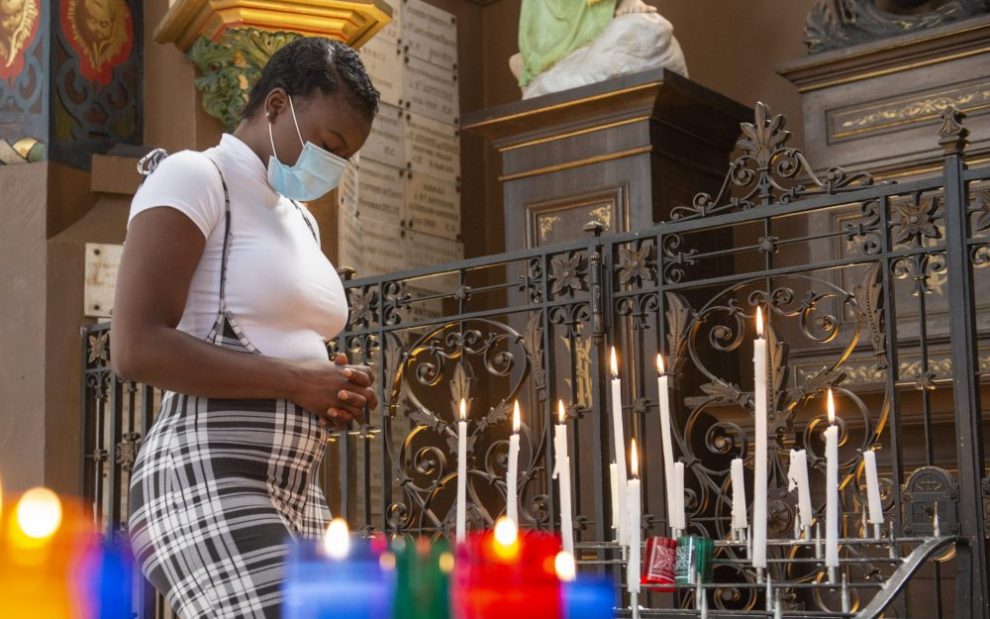







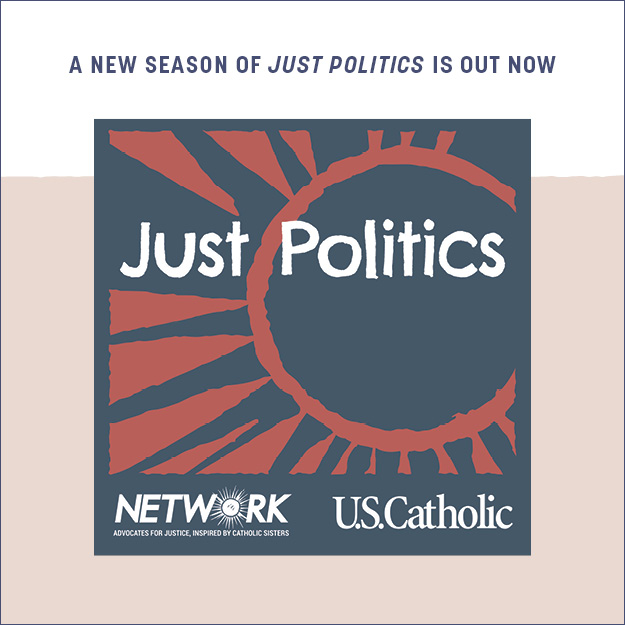




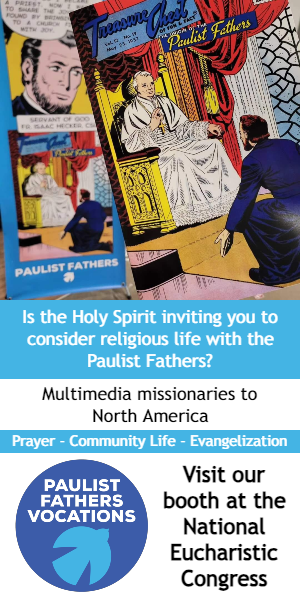
Add comment